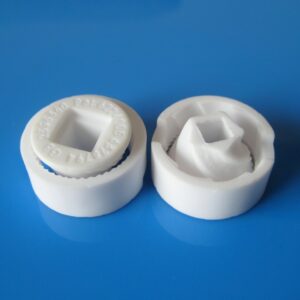Glazed Metallized Alumina Ceramic Tube for High-current Feedthroughs
Our product production is mainly divided into 3 steps, forming - finishing - metallization. The production flow chart is shown below.

1. Forming Method
There are mainly Dry Pressing, Hot Pressing, Isostatic Pressing, and Ceramic Injection Molding (CIM), each of which has its own advantages and disadvantages. We will choose the most suitable forming method on the basis of saving costs and ensuring quality.
2. Finishing Process
In order to achieve the precision of the product, most ceramic structural parts need further finishing treatment after the sintering process. The main finishing processes we use are machining (lapping, polishing...) and glazing.
3. Metallization Process
Metallization of ceramics refers to the creation of thin metal layers (films) on the surface of ceramics. After the surface of the ceramic material is metallized, it has both the characteristics of ceramics and the properties of metal.
Which Metallization Processes We Support?
Jinghui specializes in the production of metallized ceramic structural components, has rich experience in manufacturing precision ceramic parts, and is proficient in the surface metallization process of ceramic structural parts such as Mo-Mn method, electroless nickel plating method, silver firing method and W-Au method. Here we focus on the electroless nickel plating method.
Introduction to Electroless Nickel Plating Method
Electroless nickel plating, also known as chemical nickel plating or autocatalytic nickel plating, is to reduce the nickel ions in the plating solution to metal and to deposit them onto the surface of the ceramic with the help of a suitable reducing agent without an external current. The brief process of electroless nickel plating method is shown in the picture below.

Advantages of Electroless Nickel Plating Method
1. Uniform coating and small pinholes.
2. Low cost, suitable for mass production.








